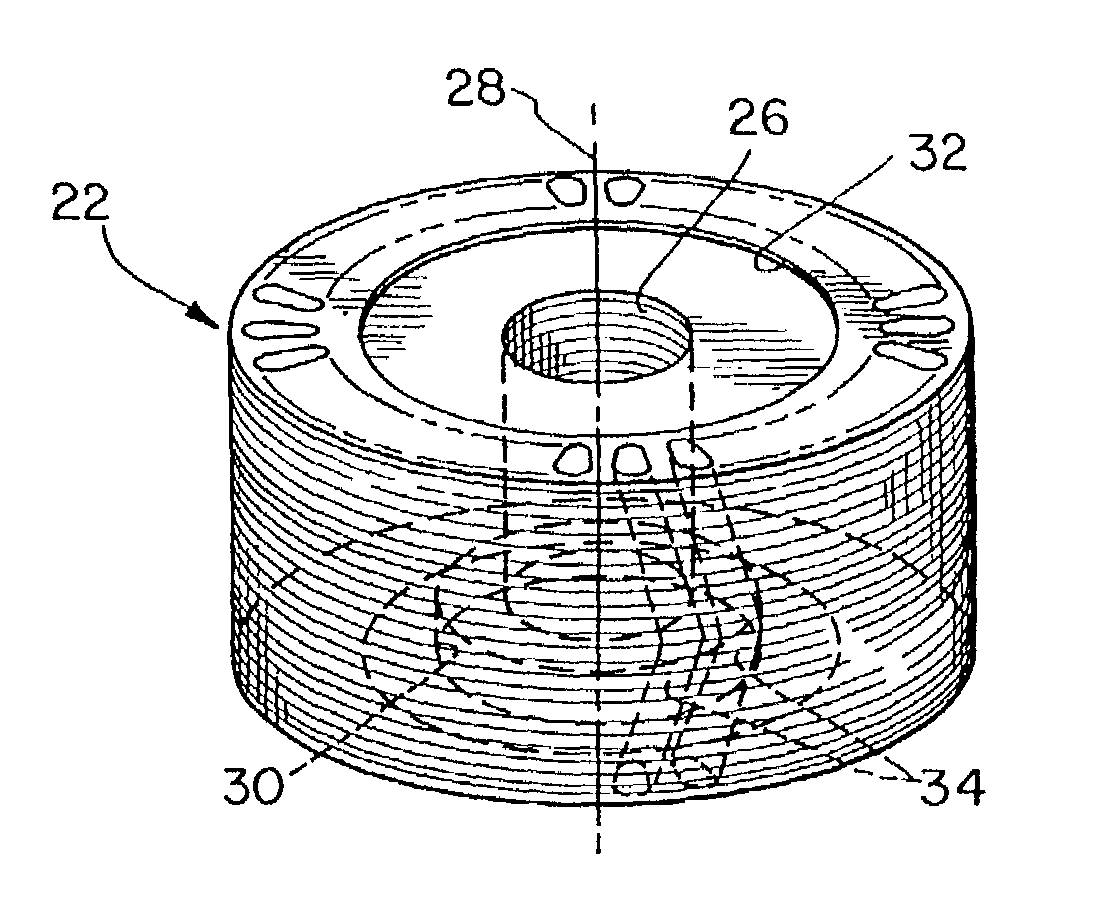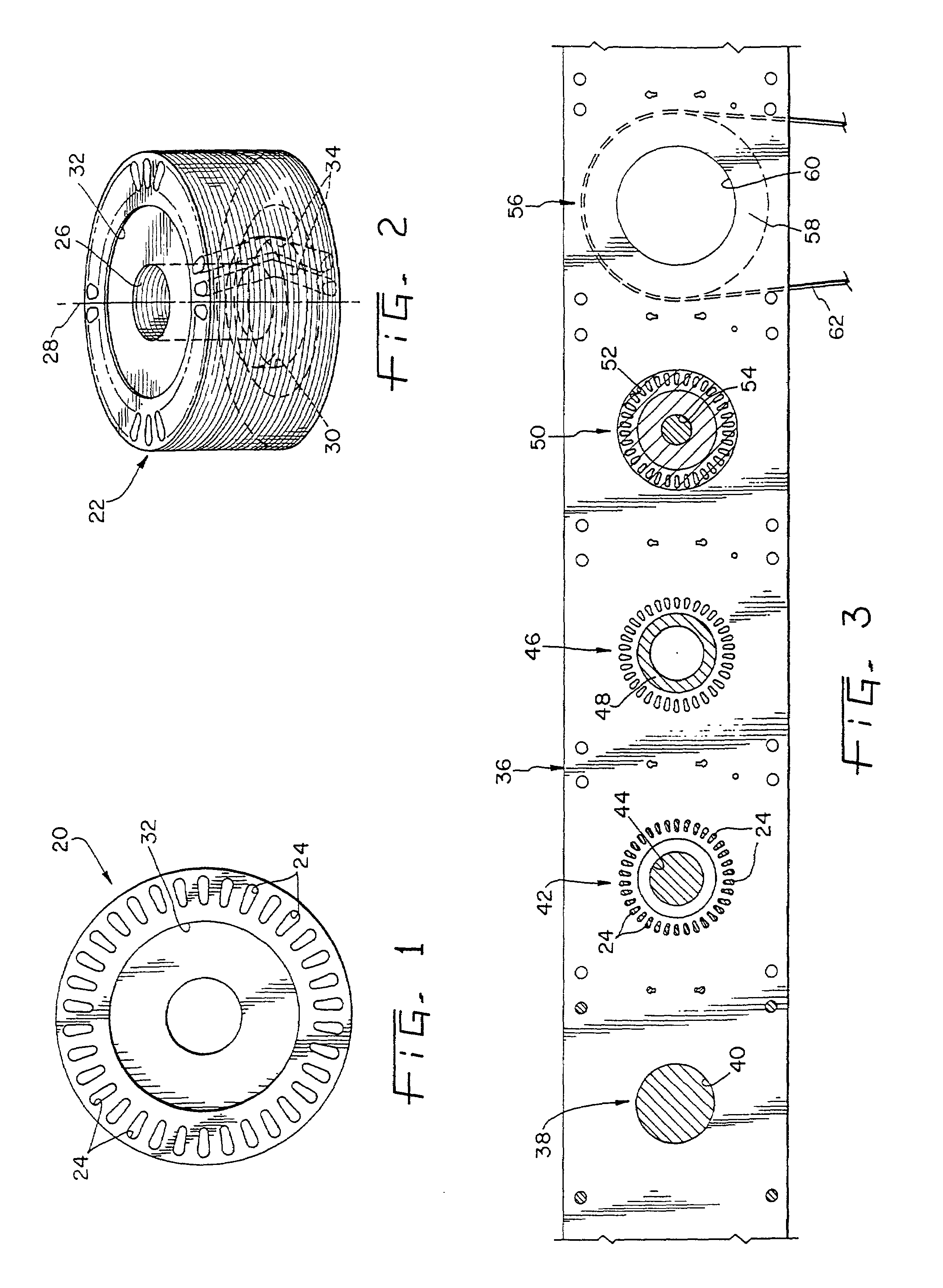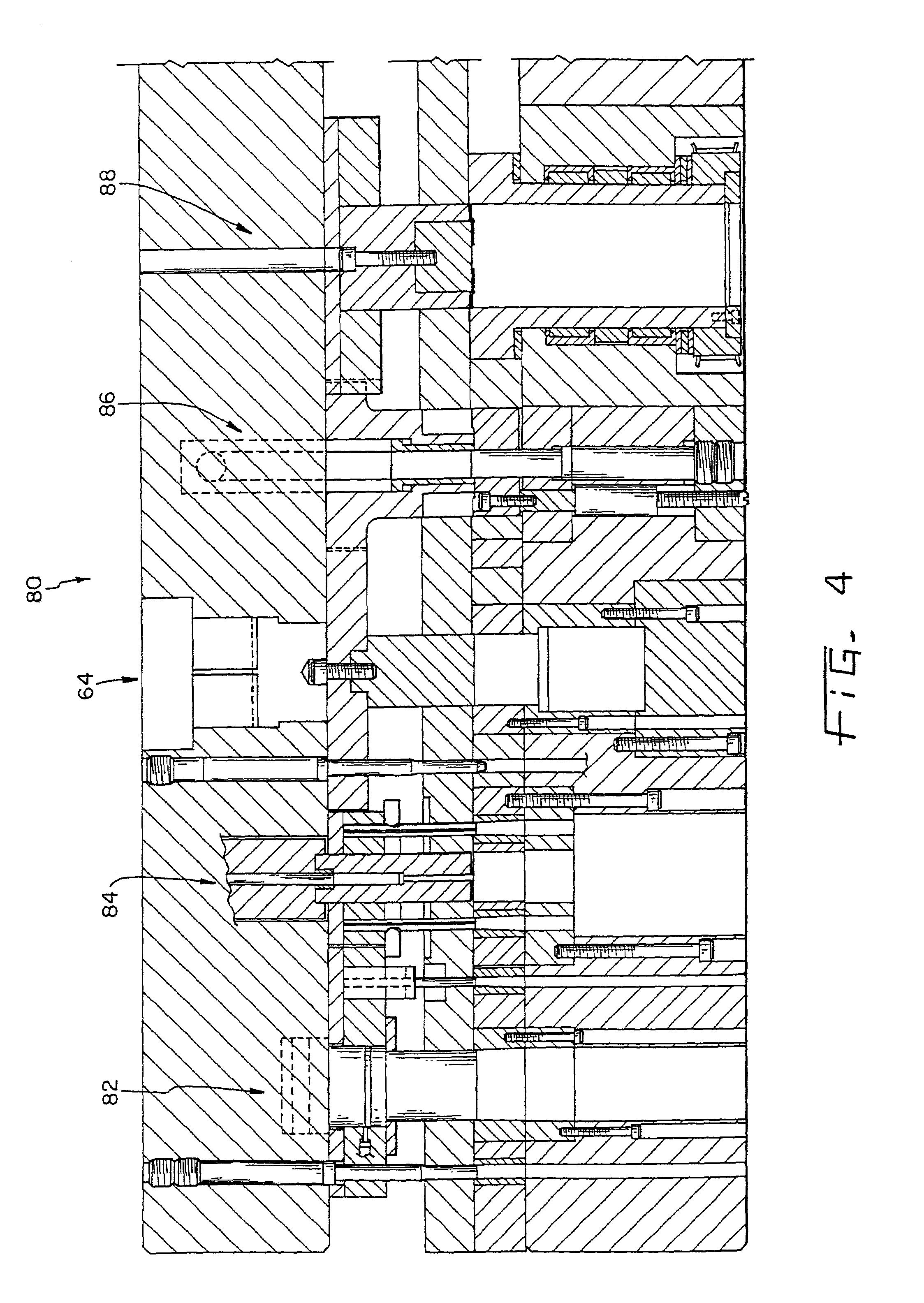Lamination stack with center interlock
- Summary
- Abstract
- Description
- Claims
- Application Information
AI Technical Summary
Benefits of technology
Problems solved by technology
Method used
Image
Examples
Embodiment Construction
[0034]The present invention is a centrally interlocked lamination stack and the related method and apparatus for forming laminations to be used in making electromagnetic cores. Referring to FIG. 1, a single lamination (or lamina) is shown indicated by numeral 20 which when interlocked with additional laminations forms a stack which may be used to make laminated rotor core 22 of FIG. 2. For purposes of this application, the term “stack” shall refer to one or more laminations which are adapted to be aggregated and interlocked. Each lamina 20 has a plurality of teardrop shaped slot openings or conductor slots 24 spaced about and adjacent its perimeter, in this example thirty-four. Core 22 includes central shaft hole 26 having central stack axis 28, which includes counterbore 30 formed in the lower end of core 22. Each lamina excepting the bottom lamina in core 22 has centrally located indentation 32 with a central axis coaxial with central stack axis 28, indentation 32 forming a depres...
PUM
| Property | Measurement | Unit |
|---|---|---|
| Thickness | aaaaa | aaaaa |
| Angle | aaaaa | aaaaa |
Abstract
Description
Claims
Application Information
 Login to View More
Login to View More - R&D
- Intellectual Property
- Life Sciences
- Materials
- Tech Scout
- Unparalleled Data Quality
- Higher Quality Content
- 60% Fewer Hallucinations
Browse by: Latest US Patents, China's latest patents, Technical Efficacy Thesaurus, Application Domain, Technology Topic, Popular Technical Reports.
© 2025 PatSnap. All rights reserved.Legal|Privacy policy|Modern Slavery Act Transparency Statement|Sitemap|About US| Contact US: help@patsnap.com



